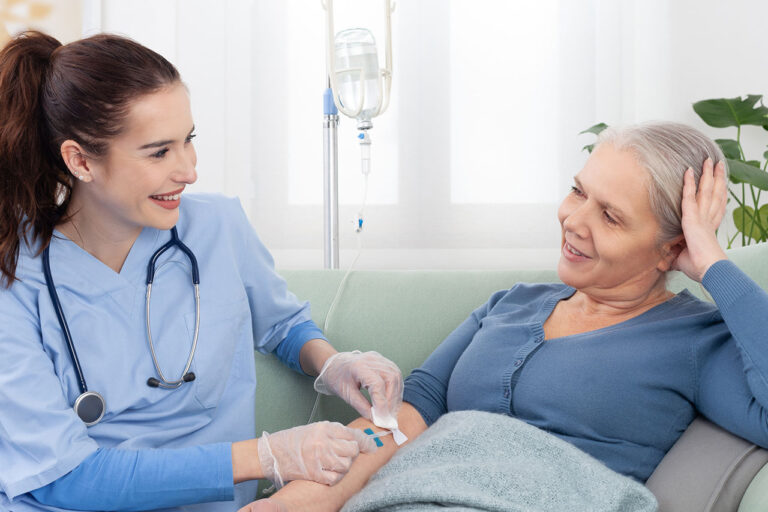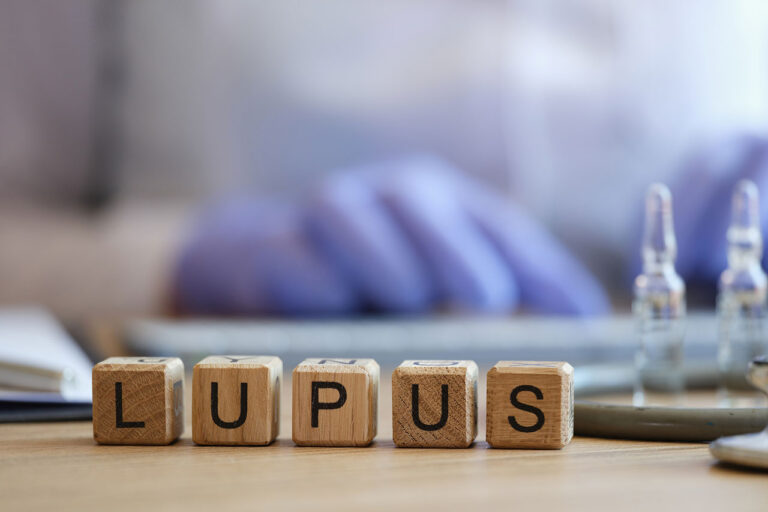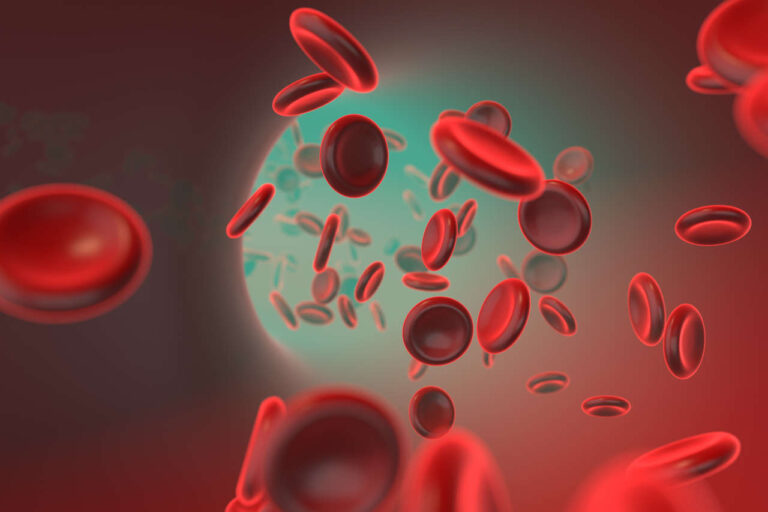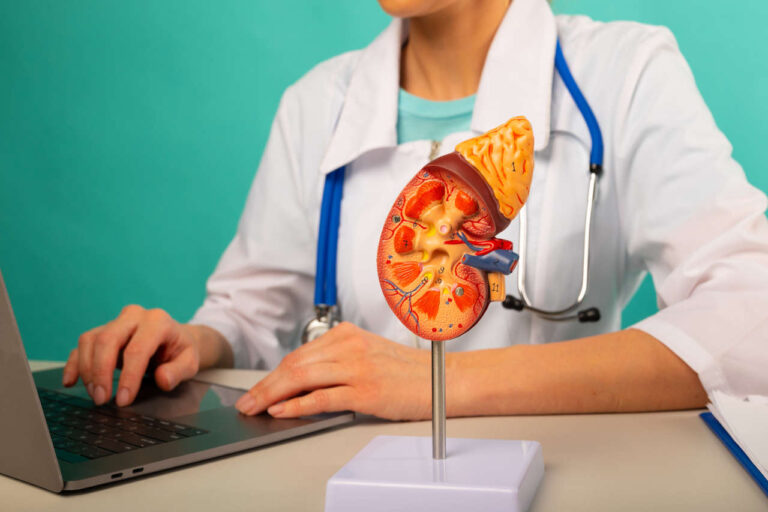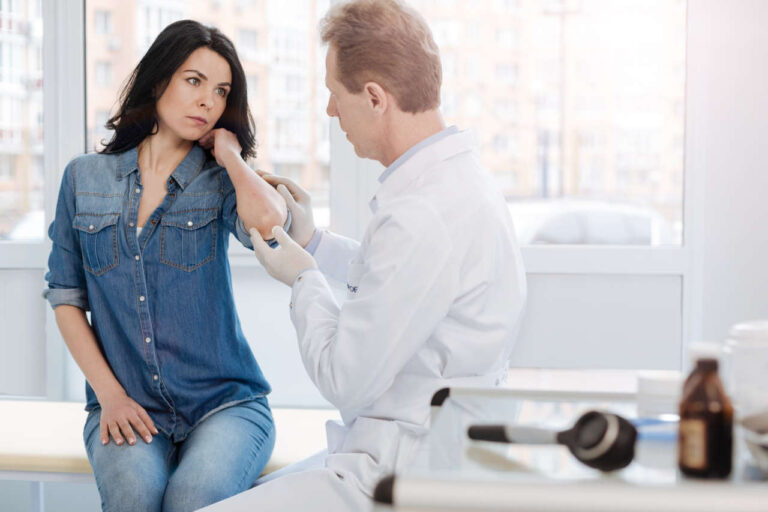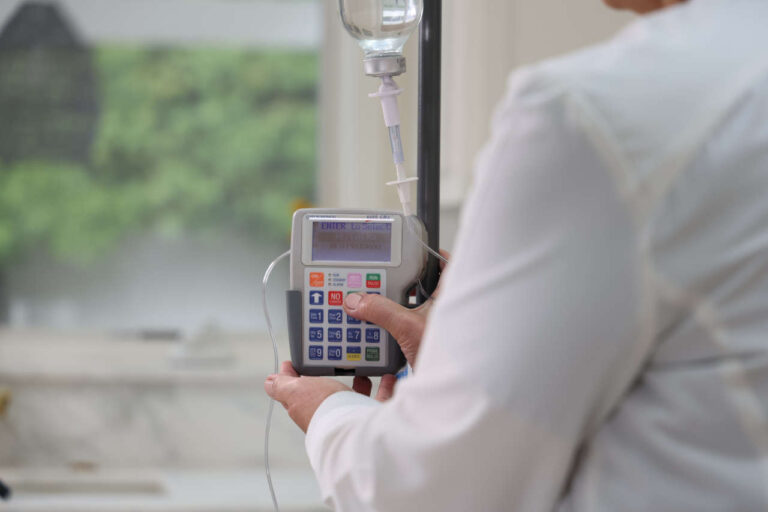
Kawasaki disease (KD) is a rare heart condition that mainly affects children. In the US, 9 to 20 children out of every 100,000 are diagnosed with this condition each year. If left untreated, Kawasaki disease can cause lasting damage to the heart.
Get IVIG Prior Authorization
Fortunately, IVIG treatment is available for Kawasaki disease. With early detection and the correct therapy, most children can recover fully from this condition. Here is everything you need to know about IVIG for Kawasaki disease.
What Is Kawasaki Disease?
Let’s learn more about this disease before diving into its treatment. Kawasaki disease, also known as Kawasaki syndrome and mucocutaneous lymph node syndrome, is a rare heart condition that develops suddenly.
It almost always affects children younger than five years old. It causes the immune system to attack and inflame the blood vessels, resulting in damage to the coronary arteries responsible for carrying blood to the heart.
Causes of Kawasaki Disease
Doctors recommend IVIG treatment for Kawasaki disease because they believe it may be an autoimmune condition. However, the exact causes of Kawasaki disease are still unknown.
This disease may result from gene mutations, irritants exposed to a child, or viral and bacterial infections.
Risk Factors for Kawasaki Disease
Kawasaki disease is not contagious, but can sometimes occur in groups of children. It’s also more prevalent in winter and spring.
Other risk factors of Kawasaki disease include the following:
- Sex: Kawasaki disease is 1.5 times more likely to occur in boys
- Age: Kawasaki disease is more common among children younger than 5
- Ethnicity: Kawasaki disease is more prevalent in children of Asian descent
Kawasaki Disease Symptoms
Symptoms of Kawasaki disease that IVIG treatment can help manage include the following:
Early Symptoms:
- Bloodshot eyes
- Rash or peeling skin
- Swollen lymph nodes
- Bright and swollen tongue
- High fever lasting over five days
- Irritation in the throat, mouth, and lips
- Inflammation and redness in hands and feet
These symptoms may persist for over two weeks.
Later Symptoms:
- Joint pain
- Peeling skin
- Stomach problems
- Enlarged gallbladder
- Abdominal problems
Children will also start experiencing heart problems 10-14 days after the onset of symptoms.
Their bodies may not present the symptoms entirely, but you must visit a doctor as soon as you notice these signs to start IVIG treatment for Kawasaki disease.
Get IVIG Copay Assistance
Speak to a SpecialistKawasaki Disease Diagnosis
Before recommending IVIG for Kawasaki disease, the doctor will thoroughly examine your child and ask about their symptoms. Symptoms such as high fever, red eyes, and rashes are enough for the doctor to diagnose the disease.
They may also order the following:
- Blood and urine tests
- Echocardiogram (echo)
- Electrocardiogram (EKG)
- Imaging tests such as X-rays
Kawasaki Disease Treatment
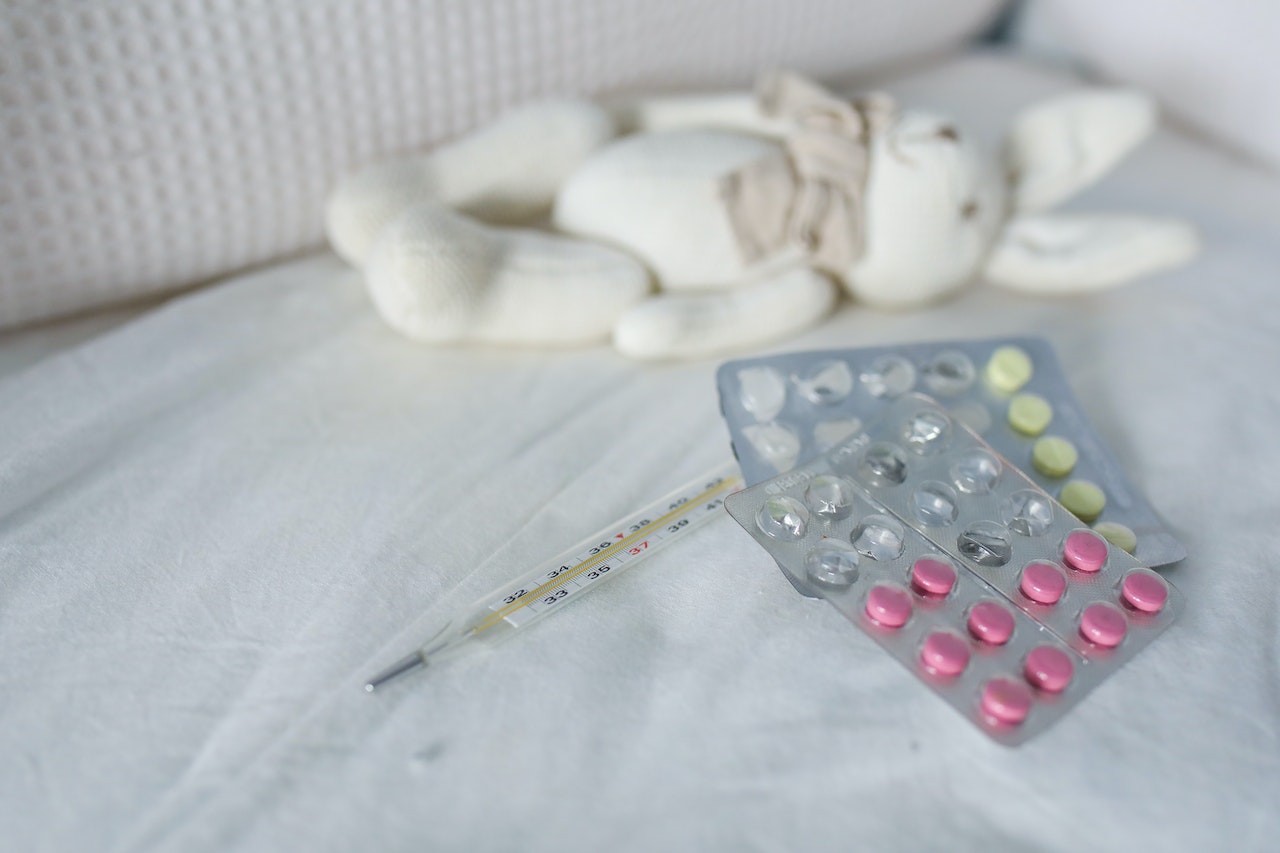
With early diagnosis and treatment, children have a good chance of a full recovery. Otherwise, they might develop more serious, long-term heart problems such as dysrhythmia, myocarditis, aneurysms, and arrhythmias.
Treatments for this condition include:
- Aspirin to control the fever and prevent blood clots
- IVIG or immune globulin injections to prevent heart damage
- Corticosteroids in case IVIG treatment for Kawasaki disease fails
IVIG for Kawasaki Disease
Kawasaki syndrome is not well understood. Since it may be an autoimmune disorder, many doctors recommend IVIG therapy. IVIG, or intravenous immune globulin, is a product made from the plasma of healthy donors and contains various antibodies.
Gamma globulins are a class of immunoglobulins used to treat Kawasaki disease. This glycoprotein appears in response to foreign antigens and activates a series of mechanisms that lead to their removal. In its immunologically active form, gamma globulins can balance the immune system.
Get Your IVIG Dose
At-Home InfusionIs IVIG Treatment Effective for Kawasaki Disease?
IVIG is an effective treatment for Kawasaki disease. It reduces the severity of symptoms to help your child recover. IVIG treatment can be more effective when paired with a course of aspirin.
Numerous studies have confirmed the efficacy of IVIG for Kawasaki disease. Here is a closer look at some of them.
Evaluating the Effects of IVIG on Inhibiting Peripheral Blood Lymphocyte Death
A 2007 study explored the therapeutic action of IVIG on peripheral blood lymphocytes (PBLs) obtained from children with acute Kawasaki disease. Scientists divided the participants into two groups:
- One group that received only aspirin
- One group that received a combination of aspirin and IVIG
Treatment resulted in a lower PBL cell death percentage and DNA fragmentation. The group receiving aspirin and IVIG treatment for Kawasaki disease also experienced a faster clinical remission than those receiving aspirin alone.
This study concluded that PBL cell death might be involved in the development of Kawasaki disease. It also showed that IVIG helps treat Kawasaki disease by affecting this mechanism.
Examining the Immune Response of Patients with Kawasaki Disease to Intravenous Immunoglobulin Therapy
A study in 2021 examined the immune response of patients with Kawasaki disease to intravenous immunoglobulin therapy. Researchers in this study evaluated the effects of IVIG on peripheral blood leukocyte populations in patients.
They found that circulating neutrophils were highly active in KD patients and were a source of IL-1β. IL-1β is a cytokine that promotes inflammatory responses throughout the body.
After receiving IVIG treatment for Kawasaki disease, the level of this cytokine dropped significantly. These results show that IVIG can help treat KD by reducing IL-1β in the blood and lowering inflammation.
A Retrospective Study of the Therapeutic Window of IVIG Therapy
A recent study in 2023 investigated the therapeutic window of IVIG therapy in patients with Kawasaki disease. Researchers placed participants into four categories based on the time passed since the onset of their symptoms.
They found that subjects who received IVIG infusions 7 days after the onset of their symptoms suffered from more f coronary artery abnormalities and lengthier hospital stays than those treated earlier.
Their findings suggest that receiving IVIG treatment for Kawasaki disease within 7 days of symptom onset is more effective in reducing heart problems. This 7-day therapeutic window points to the importance of early detection and treatment of the disease.
IVIG Procedure for Kawasaki Disease
IVIG therapy is a straightforward procedure that can be administered in an outpatient clinic, a hospital, or at home. Most children with Kawasaki disease receive infusions in a hospital to avoid the risk of complications.
A licensed nurse will administer the infusion solution intravenously or subcutaneously. IVIG will take around 3 hours to infuse.
They will only feel minor discomfort when the nurse inserts the needle into their arm. After that, IVIG treatment for Kawasaki disease is a painless and comfortable procedure.
What to Expect
After receiving the first round of IVIG, your child’s symptoms should improve within 36 hours. If this doesn’t happen and their fever persists, they may receive a second dose.
Does IVIG Have Any Side Effects?
Your child may experience minor side effects while receiving IVIG for Kawasaki disease, especially if it’s their first time receiving the treatment or the dosage is too high.
These short-lived side effects include:
- Nausea
- Backache
- Tiredness
- Stomach ache
- Mild headaches
- Pain at the site of the IV
In less than 1% of patients, IVIG treatment for Kawasaki disease may cause long-term side effects, including thrombotic events, renal impairment, and neurological issues.
Make the Experience Easier for Your Child
You can provide emotional support while your child receives IVIG therapy for Kawasaki disease. Try to explain to them what is happening, and stay with them during the infusion. Your presence will keep them calm and comfortable.
You can also distract them from the treatment by reading a story or singing a song. Keep their mind off the treatment so they don’t try to pull on the IV line and take it out.
How Much Does IVIG Treatment for Kawasaki Disease Cost?
The cost of IVIG can vary based on several factors, including:
- Brand of IVIG
- Dosage and duration of treatment
- Age and weight of the IVIG recipient
- Method of injection (intravenous vs. subcutaneous)
The overall cost can be around $100 to $350 per gram for each recipient. The high price of IVIG is due to the complicated manufacturing processes involved. However, there are financial aids available to help you pay lower out-of-pocket costs.
Copay and Financial Assistance
Most insurance plans cover a part of the costs of IVIG treatment for Kawasaki disease if the doctor deems it necessary for your child.
Apart from insurance coverage, various copay assistance programs are available to help those with Kawasaki disease receive treatment. With proper research, you can find suitable programs to apply for and reduce treatment costs.
Can IVIG help?
Free IVIG Treatment InfoReceive IVIG Therapy for Kawasaki Disease from AmeriPharma® Specialty Pharmacy

Kawasaki disease is easily manageable with early diagnosis and proper treatment. If your child is struggling with this rare heart condition, AmeriPharma® Specialty Pharmacy can help.
We offer IVIG infusion services in over 40 US states and territories. We can send a specialized infusion nurse to your home to administer IVIG treatment for Kawasaki disease, or you can bring your child to one of our infusion centers.
We aim to simplify complex treatments by offering full-service coordination, 24/7/365 support, insurance approval, copay assistance, and more. Get started with our specialty pharmacy today and receive the best at-home IVIG therapy for Kawasaki disease.



